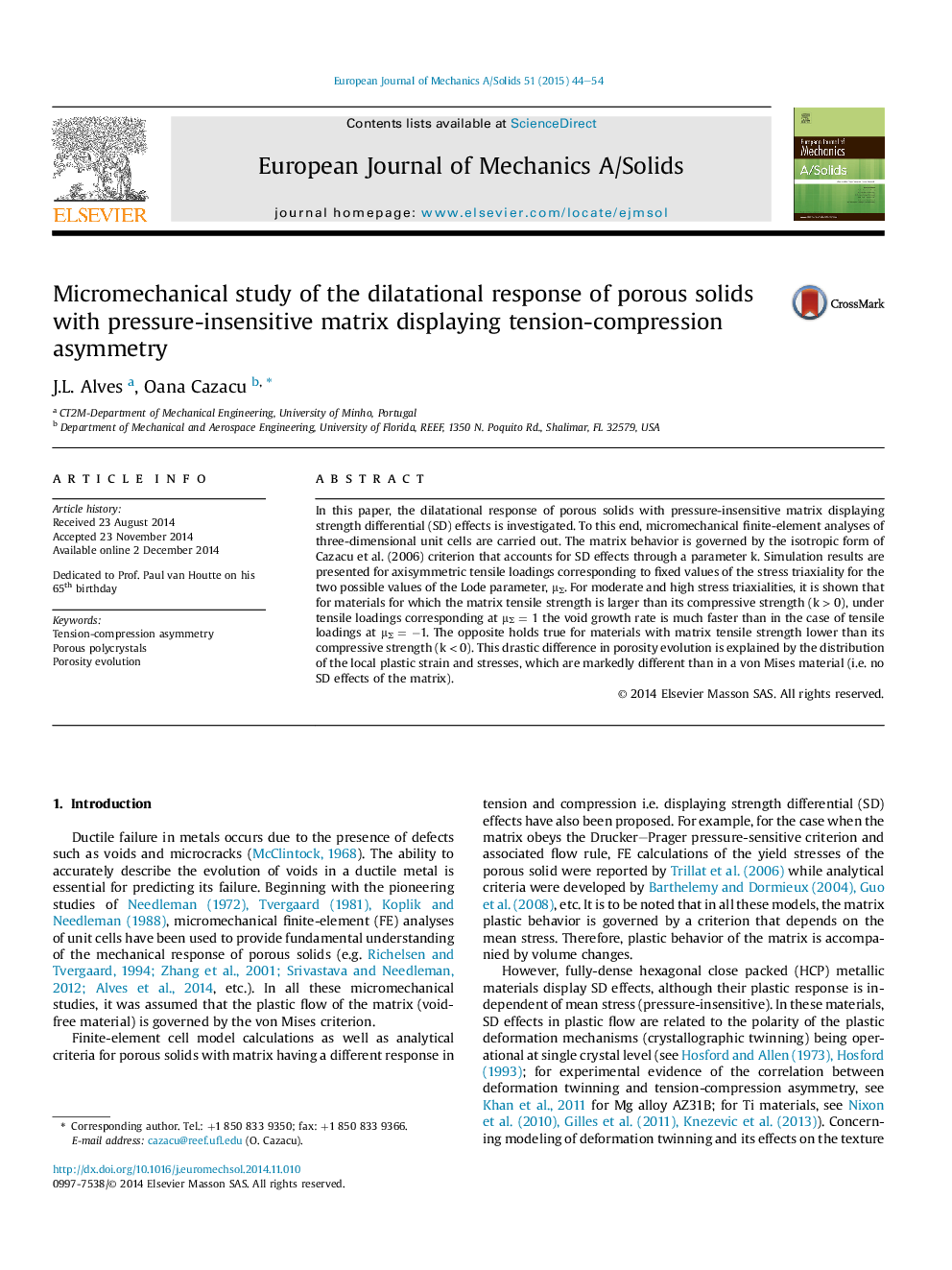| Article ID | Journal | Published Year | Pages | File Type |
|---|---|---|---|---|
| 7170402 | European Journal of Mechanics - A/Solids | 2015 | 11 Pages |
Abstract
In this paper, the dilatational response of porous solids with pressure-insensitive matrix displaying strength differential (SD) effects is investigated. To this end, micromechanical finite-element analyses of three-dimensional unit cells are carried out. The matrix behavior is governed by the isotropic form of Cazacu et al. (2006) criterion that accounts for SD effects through a parameter k. Simulation results are presented for axisymmetric tensile loadings corresponding to fixed values of the stress triaxiality for the two possible values of the Lode parameter, μΣ. For moderate and high stress triaxialities, it is shown that for materials for which the matrix tensile strength is larger than its compressive strength (k > 0), under tensile loadings corresponding at μΣ = 1 the void growth rate is much faster than in the case of tensile loadings at μΣ = â1. The opposite holds true for materials with matrix tensile strength lower than its compressive strength (k < 0). This drastic difference in porosity evolution is explained by the distribution of the local plastic strain and stresses, which are markedly different than in a von Mises material (i.e. no SD effects of the matrix).
Related Topics
Physical Sciences and Engineering
Engineering
Mechanical Engineering
Authors
J.L. Alves, Oana Cazacu,
